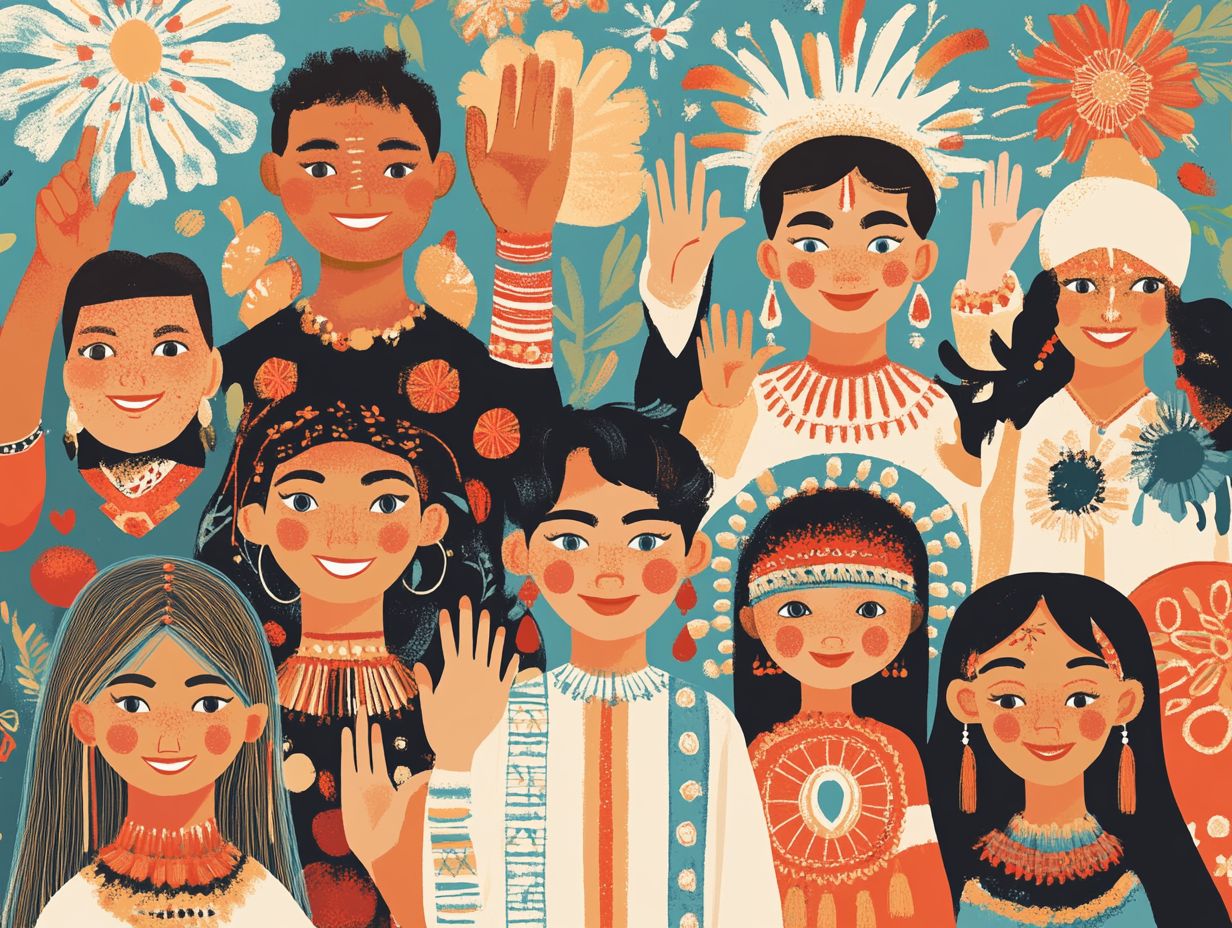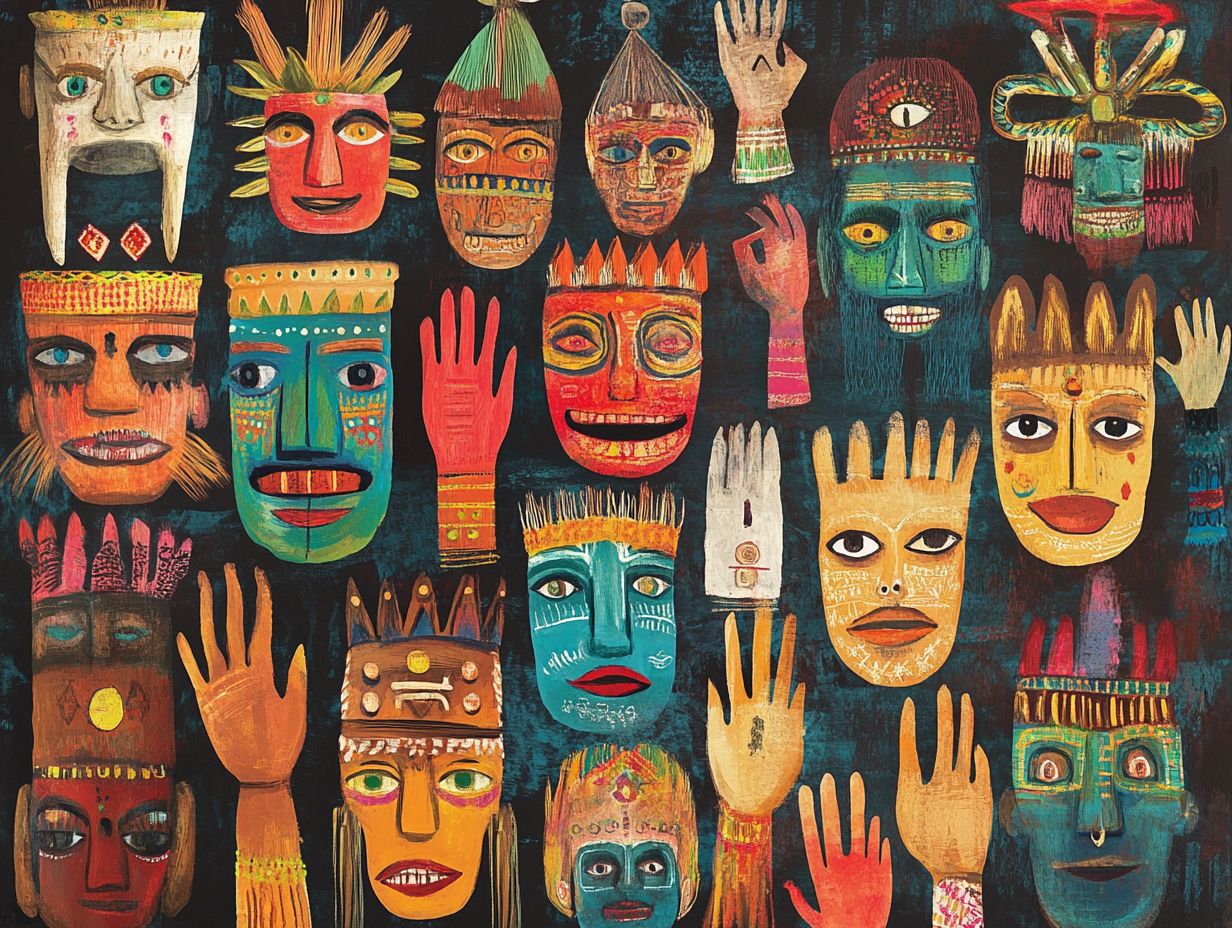the influence of culture on nonverbal communication
Nonverbal communication is essential in how you connect and interact with others. It often conveys messages that words simply cannot express.
This silent language isn t one-size-fits-all; it s profoundly shaped by cultural backgrounds. From gestures to body language, understanding these cultural nuances can significantly enhance your ability to communicate effectively.
This article delves into the complexities of nonverbal communication. It showcases how cultural differences influence your interactions and provides examples and strategies to navigate potential barriers.
Are you ready to unlock the secrets of nonverbal communication? Prepare to explore the rich tapestry of nonverbal cues across various cultures and discover how embracing cultural sensitivity can elevate your communication skills to new heights.
Contents
- Key Takeaways:
- The Importance of Nonverbal Communication
- How Culture Shapes Nonverbal Communication
- Examples of Cultural Influence on Nonverbal Communication
- Overcoming Cultural Barriers in Nonverbal Communication
- The Role of Awareness and Understanding in Nonverbal Communication
- Your Questions Answered!
- 1. Curious about how culture shapes our interactions?
- 2. Are there any universal nonverbal cues that are understood across cultures?
- 3. What are some examples of how culture affects nonverbal communication?
- 4. Can cultural differences in nonverbal communication lead to misunderstandings?
- 5. How can one become more culturally competent in nonverbal communication?
- 6. Is it possible to overcome cultural barriers in nonverbal communication?
Key Takeaways:

Discover how culture influences your understanding of nonverbal cues, such as gestures and body language.
Awareness and understanding of cultural differences in nonverbal communication can lead to more effective cross-cultural communication.
Cultural sensitivity is crucial for avoiding miscommunication and building stronger relationships across cultures.
The Importance of Nonverbal Communication
Nonverbal communication is an essential component of human interaction. It encompasses the myriad ways you convey feelings, attitudes, and intentions without uttering a single word.
This rich tapestry includes body language, gestures, facial expressions, and even the power of silence. All of these can profoundly impact interpersonal relationships across various cultures and contexts.
By grasping the significance of nonverbal cues, you elevate your communication skills. This nurtures empathy and dismantles communication barriers, allowing you to connect more deeply in multicultural environments.
Defining Nonverbal Communication
Nonverbal communication refers to sending messages or signals without words. It includes a vast array of behaviors, such as body language, gestures, and facial expressions.
These behaviors are essential for conveying emotional nuances and social cues. Consider this: body language frequently reveals more about your feelings than your spoken words ever could.
Crossed arms might signal defensiveness, while open arms can express receptivity. Gestures, such as giving a thumbs-up for approval or raising a hand to grab attention, add richness to your interactions.
Facial expressions wield significant power in communication. A furrowed brow can indicate concern, while a smirk might suggest amusement.
Grasping these elements is vital. Nonverbal cues can profoundly influence the interpretation of your message and affect interpersonal dynamics in personal and professional settings.
How Culture Shapes Nonverbal Communication
Culture profoundly influences nonverbal communication, as it shapes how you express emotions and interpret gestures. Understanding the significance of cultural context in communication is vital for effective interactions.
Different cultural backgrounds establish distinct norms regarding body language. This impacts the meanings you attach to eye contact, personal space, and touch.
Understanding these cultural subtleties is crucial for navigating cross-cultural communication effectively. It helps minimize misunderstandings in diverse settings.
Cultural Differences in Gestures and Body Language

Cultural differences in gestures and body language can lead to misunderstandings. The same gesture might carry vastly different meanings across cultures.
Take the thumbs-up, for example; in North America, it s a symbol of approval. However, in certain parts of the Middle East, it can be offensive.
Understanding these cultural nuances is essential for effective communication. Even maintaining eye contact can convey entirely different messages.
In many Western cultures, it signals confidence and honesty. In some Asian cultures, it might be perceived as challenging or disrespectful.
Similarly, nodding generally indicates agreement, but in Greece, it means no. These contrasts underscore the importance of understanding subtleties.
Without such awareness, you may inadvertently offend someone or misinterpret their intentions. This can hinder your ability to build rapport and create misunderstandings in personal and professional interactions.
Start your journey to mastering nonverbal communication today!
Impact of Cultural Norms and Values
Cultural norms and values play a crucial role in shaping nonverbal communication. They influence how you express emotions and interact with others. For instance, in many Asian cultures, there is a strong emphasis on maintaining social harmony. This often translates to subtle body language and minimal emotional expression.
In contrast, Western cultures often encourage more overt emotional displays and expressive gestures.
These differences can create significant challenges during cross-cultural interactions. Misunderstandings can arise from varied interpretations of nonverbal cues. For example, in international business or multicultural environments, a smile may signify politeness in one culture but be perceived as insincerity in another.
Social expectations regarding eye contact, physical proximity, and gestures can differ widely, further complicating communication. Therefore, it s essential to navigate these intricate layers of nonverbal language. Doing so often requires a deeper understanding of the emotional landscapes shaped by diverse cultural backgrounds.
Examples of Cultural Influence on Nonverbal Communication
Examining examples of cultural influence on nonverbal communication reveals the complexities and nuances inherent in interpersonal interactions across various cultures.
For example, while looking someone in the eye shows confidence in North America, it can be seen as disrespectful in certain Asian cultures. These misunderstandings highlight the importance of emotional intelligence and the ability to understand and work well with people from different cultures.
Comparing Nonverbal Cues in Different Cultures
Comparing nonverbal cues in different cultures reveals a fascinating tapestry of body language and gestures that can either enhance communication or lead to misunderstandings.
Take India and Japan as examples; the subtleties surrounding personal space and physical contact vary greatly. This influences how people perceive body language and nonverbal signals.
Consider the gesture of raising the thumb: in many Western cultures, it conveys approval; however, in certain regions of the Middle East, it can be seen as offensive. Similarly, while eye contact is often considered a sign of trust in the United States, it may be interpreted as disrespectful in cultures like Japan, where prolonged eye contact is frowned upon.
By understanding these distinctions, you can navigate social interactions more skillfully and enhance your communication abilities. Being aware of regional differences not only builds stronger relationships but also reduces the likelihood of misinterpreting well-intentioned gestures that may not resonate culturally.
Overcoming Cultural Barriers in Nonverbal Communication

Overcoming cultural barriers in nonverbal communication demands a proactive commitment to understanding and adapting to various communication styles.
Jumpstart your success by using effective cross-cultural communication strategies! By doing so, you can significantly minimize misunderstandings and cultivate stronger interpersonal relationships.
This highlights the vital role of cultural training and empathy in navigating communication challenges.
Strategies for Effective Cross-Cultural Communication
Effective cross-cultural communication strategies are essential for navigating the complex landscape of body language cues and emotional expressions in diverse environments. By developing your emotional intelligence and refining your communication skills, you can greatly enhance your interactions across various cultures.
To excel in a multicultural setting, pay close attention to the nuances of nonverbal signals, which often communicate more than spoken words. Practicing active listening while being mindful of your own cultural biases can deepen your understanding of others’ perspectives.
Engaging in regular self-reflection helps cultivate greater empathy, enabling you to approach conversations with an open mind. Employing strategies like asking open-ended questions and showing respect for differing customs can further bridge communication gaps, fostering more meaningful connections that ultimately lead to successful collaborations.
Embrace these insights to boost your communication skills and connect with others more effectively!
The Role of Awareness and Understanding in Nonverbal Communication
Awareness and understanding are vital keys to effective nonverbal communication, enabling you to navigate the intricate world of body language and cultural nuances.
By cultivating awareness of different cultures and enhancing your emotional intelligence, you can elevate your interactions. This fosters a deeper global understanding among diverse populations.
Benefits of Cultural Sensitivity in Communication
Being aware of and respectful towards different cultures offers a wealth of benefits. It enables you to foster empathy and understanding among individuals from diverse backgrounds.
Being mindful of cultural differences and social customs enhances your nonverbal communication skills. This significantly reduces the chances of misunderstandings.
This heightened awareness allows you to navigate various social contexts with remarkable ease. You can recognize and respect the different expressions, gestures, and body language that may differ from one culture to another.
As a result, your relationships can thrive. They are built on a solid foundation of mutual respect.
Actively engaging in culturally sensitive practices creates an environment rich in collaboration and innovation. Here, diverse perspectives lead to more effective problem-solving.
Ultimately, embracing cultural sensitivity deepens your interpersonal connections. It fosters a more inclusive community, where everyone feels valued and understood.
Start your journey today by learning about a new culture!
Your Questions Answered!

1. Curious about how culture shapes our interactions?
Culture plays a significant role in shaping nonverbal communication, dictating what gestures, body language, and facial expressions are considered appropriate or rude in different societies.
2. Are there any universal nonverbal cues that are understood across cultures?
While some nonverbal cues, such as facial expressions of basic emotions, may be universally understood, the interpretation and meaning of these cues can still vary depending on cultural context.
3. What are some examples of how culture affects nonverbal communication?
Some examples include the use of personal space, hand gestures, and eye contact. For instance, in some cultures, maintaining eye contact is a sign of respect, while in others, it may be seen as confrontational.
4. Can cultural differences in nonverbal communication lead to misunderstandings?
Yes, cultural differences can lead to misunderstandings, as certain gestures or expressions may have different meanings in different cultures. Being aware of these differences is essential to avoid miscommunication.
5. How can one become more culturally competent in nonverbal communication?
To become more competent, engage in cross-cultural interactions, educate yourself about different cultures and their nonverbal norms, and be mindful of your own nonverbal cues and how they may be interpreted.
6. Is it possible to overcome cultural barriers in nonverbal communication?
With awareness and understanding, it is possible to overcome cultural barriers. By actively listening, being open-minded, and respecting cultural differences, individuals can effectively navigate and bridge gaps in nonverbal communication.




